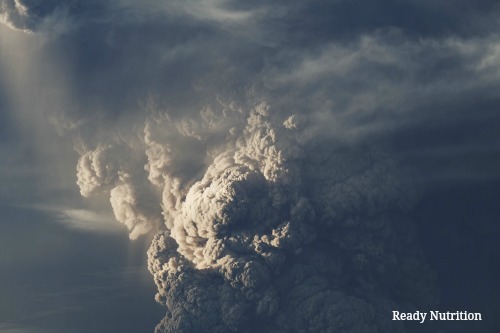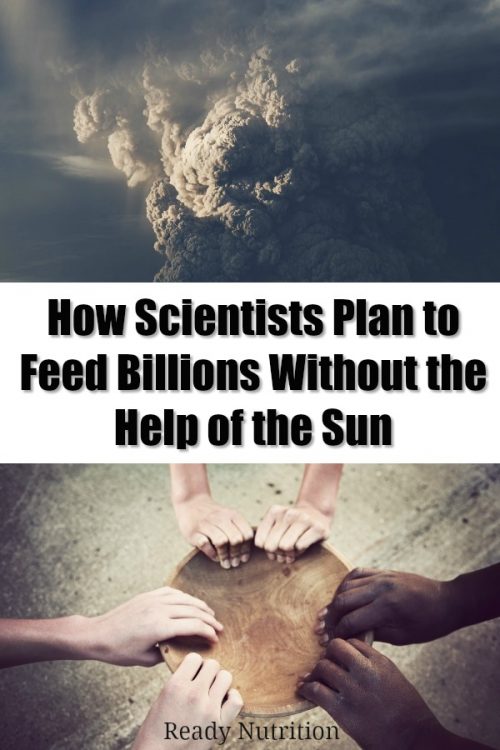
Following a massive volcanic eruption, and especially in the case of a supervolcano erupting, the eruption would blast 240 cubic miles of rock, dust and volcanic ash into the sky. This would spread throughout the world and lower global temperatures by up to 28 degrees for years and cause what scientists refer to as volcanic winter. Due to the debris and ash spewing into the atmosphere, the sun will be blocked, and crops would not be able to grow. As a result, this would cause worldwide famine. Additionally, abnormal rainfall will cause major rivers around the world to flood.
This Has Happened to the World Already
In 1816, a similar situation arose when the world experienced a decrease in global temperatures caused by a volcanic eruption and caused major food shortages and famine. The anomaly was predominantly due to a volcanic winter event caused by the massive 1815 eruption of Mount Tambora in the Dutch East Indies. This event was exacerbated by a previous eruption in 1814 of Mayon in the Philippines. Adding to this dire time, the world was already in a centuries-long period of global cooling that began in the 14th century, and the volcanic eruptions in the early 1800’s only added to the agricultural distress in Europe. Failed harvests were widespread and deeply felt.
“Food riots broke out in the United Kingdom and France, and grain warehouses were looted. The violence was worst in landlocked Switzerland, where famine caused the government to declare a national emergency. Huge storms and abnormal rainfall with flooding of Europe’s major rivers (including the Rhine) are attributed to the event, as is the August frost. A major typhus epidemic occurred in Ireland between 1816 and 1819, precipitated by the famine caused by the Year Without a Summer. An estimated 100,000 Irish perished during this period.”
A Blueprint For Surviving Volcanic Winter
To prevent history from repeating itself, scientists have been searching for ways to feed the world without the help of the sun.
“At least two scientists have already sketched out a blueprint. In their 2015 book Feeding Everyone No Matter What, David Denkenberger and Joshua Pearce propose several ways to feed billions of people without the help of the sun.
Denkenberger, an architectural engineer at Tennessee State University in Nashville, started moonlighting as a catastrophe researcher a few years ago after reading that fungi may have thrived after previous mass extinctions. If humans ever face a similar threat, he thought, ‘Why don’t we just eat the mushrooms and not go extinct?’
Indeed, people could grow mushrooms on leaf litter and on the trunks of trees killed by the disaster, Denkenberger says. Even better would be raising methane-digesting bacteria on diets of natural gas, or converting the cellulose in plant biomass to sugar, a process already used to make biofuel. Denkenberger and Pearce—an engineering professor at Michigan Technological University in Houghton—calculate that by retrofitting existing industrial plants, survivors of the catastrophe could produce enough of such alternative foods to feed the world’s population several times over.
Of course, a few other ingredients would have to survive as well: infrastructure, international cooperation, and the rule of law. Whether human society endures or snaps is the unknown on which everything else could hinge, says Seth Baum, executive director of the Global Catastrophic Risk Institute in New York City, a nonprofit think tank whose researchers include Denkenberger.
‘How would we fare? I think the only reasonable answer one can give to the question at this time is that we have absolutely no idea,’ Baum says. To him, social resilience after a catastrophe is just another question for scientists to address, instead of leaving it to dystopian writers and doomsday preppers.
Not that he has anything against survivalists. ‘As much as they might seem silly on television, I’m actually a little happier knowing that there are people out there doing that stuff,’ Baum says. He quickly adds, ‘Hopefully, it’ll never come down to just that.'”
Source: ScienceMag.org
Fortunately, there are scientists and teams of individuals looking out for the human population and finding ways to keep us alive during the worst possible circumstances. But, as Seth Baum remarked in reference to preppers and survivalists, it is a relief knowing there are people out there doing stuff to get ready and are preparing for the worst-case scenario.

This article was originally published at Ready Nutrition™ on April 9th, 2018







how about billions will starve to death or freeze to death-without the Sun , or pollinators, or non GMO foods, most of the people on Earth will perish.
Very good points, Steven.
Greetings from the Big Mango (BKK). Thr 12 Apr 12018 H.E.
Hi Tess. I would agree mushrooms and fungus could do the job, but they’re tricky to get started in volumn, and home grown or big Ag should’ve started 15 yrs ago, heh.
I sent the following message to several public forums and a senator to see if anybody is interested. If anybody wants the 18 links to articles i used, ask in comments.
NOAA, NASA, and the IPCC have failed humanity, and we’re all in for a nasty surprise … Abrupt Climate Change. This is a summary and warning i put together:
The MsM and warmist alarmists are wrong. It is the heighth of hubris and arrogance to think humans, in the space of 150 years, can change thermal cycles that are thousands of years long and have existed for millenia. The thermal mass of the land and oceans is enormous. The temperature of deep, still, parts of the ocean have barely risen one degree in 22,000 years, the last glacial max.
My reading of the climate tea leaves says we’re already past the interglacial plateau of relatively stable climate.
For the last three thousand years, Since 1000 BC, the end of the Minoan Warm Period, the global temperature trend has been -0.5 to -0.7 dgC per 1000 yrs, projecting full glacial of 8 dgC in another 7,000 yrs. Another clue, the obliquity dropped below 23.5 degrees around 1300 AD, the onset of the Wolf Minimum. Now the glacial cold lurking in the deep ocean, held in check by obliquity for 10,000 years, has been set free, ending the Holocene Interglacial. We are in the transition zone to glacial cold, expect Finoscandian ice sheets to start in 2000 yrs.
However, the solar output has been declining since 1986 and this accelerated in 2009 with solar cycle 24, the lowest in over 100 yrs. Cycle 25 will also be low and the beginning of a Grand Solar Minimum, now named the Eddy Minimum. Expect a Little Ice Age lasting 40 yrs, with some winters extremely cold, some wet cool springs to kill crops, some cold summers, and more frequent and severe storms. The storminess index went from 6.5 to 14 during the LIA. This slide into cold is showing up in German weather station records where the last 30 yrs of winter (DJF) are trending -19 dgC per 1000 yrs, much faster than the slow decline to normal glacials. Zugspitze Mtn. Resort, elev 2000m, january temperature has been trending down 1 dgC per 10 yrs.
I expect in the next ten years one billion will actually starve due to crop failures, and one billion will be eaten by stronger omnivores; feral dogs, cats, and … humans.
If you want links to the 18 articles on climate that i used, request in comments.
Sandy, Minister of Future
In Japan they are growing plants indoors using LED lights. They are converting unused warehouses into food factories where the vegetables are grown closer to where the people live (in and very near big cities), this will also reduce wasted fuel transporting the food from far away farms to the cities. How about that?